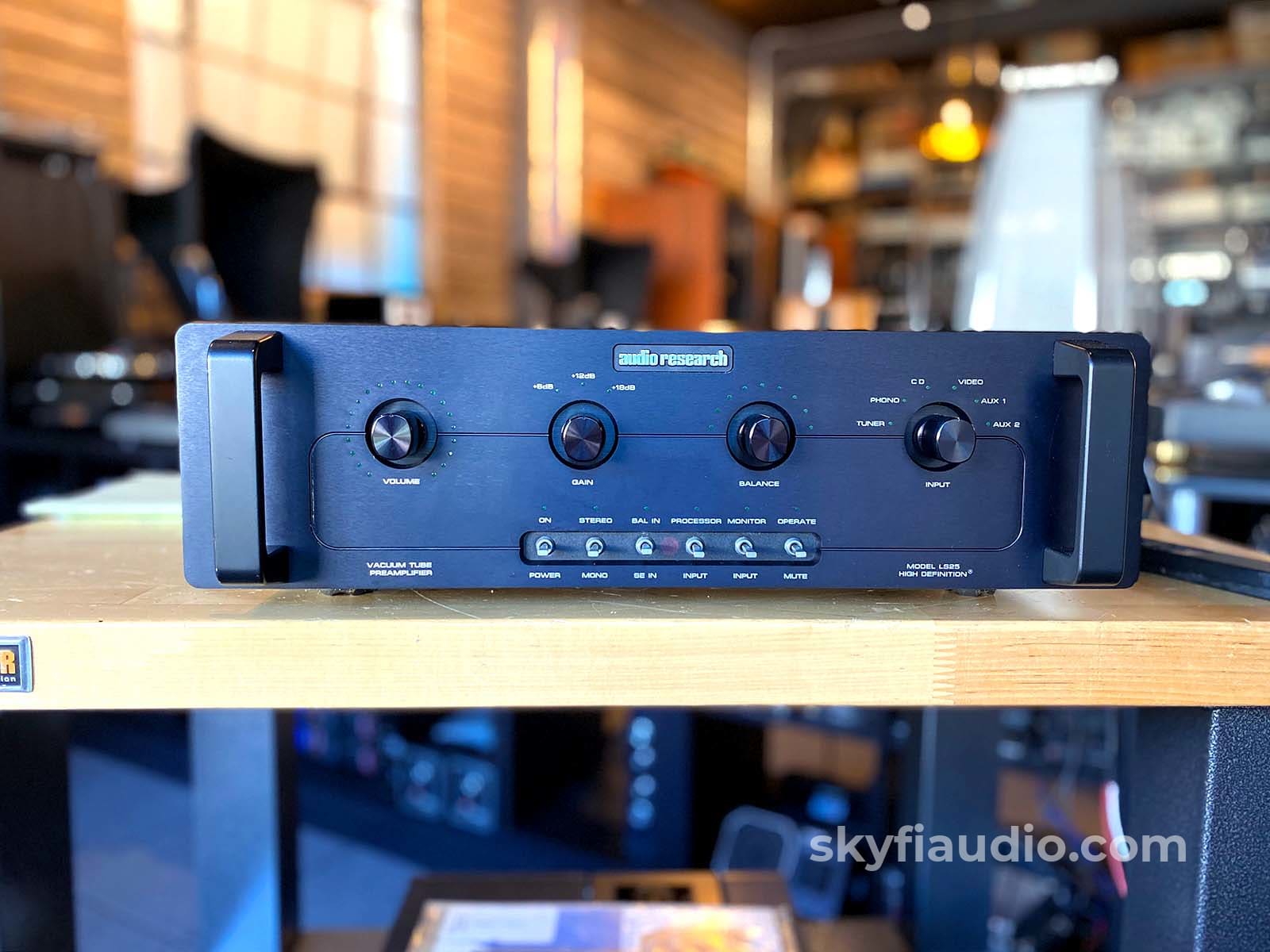
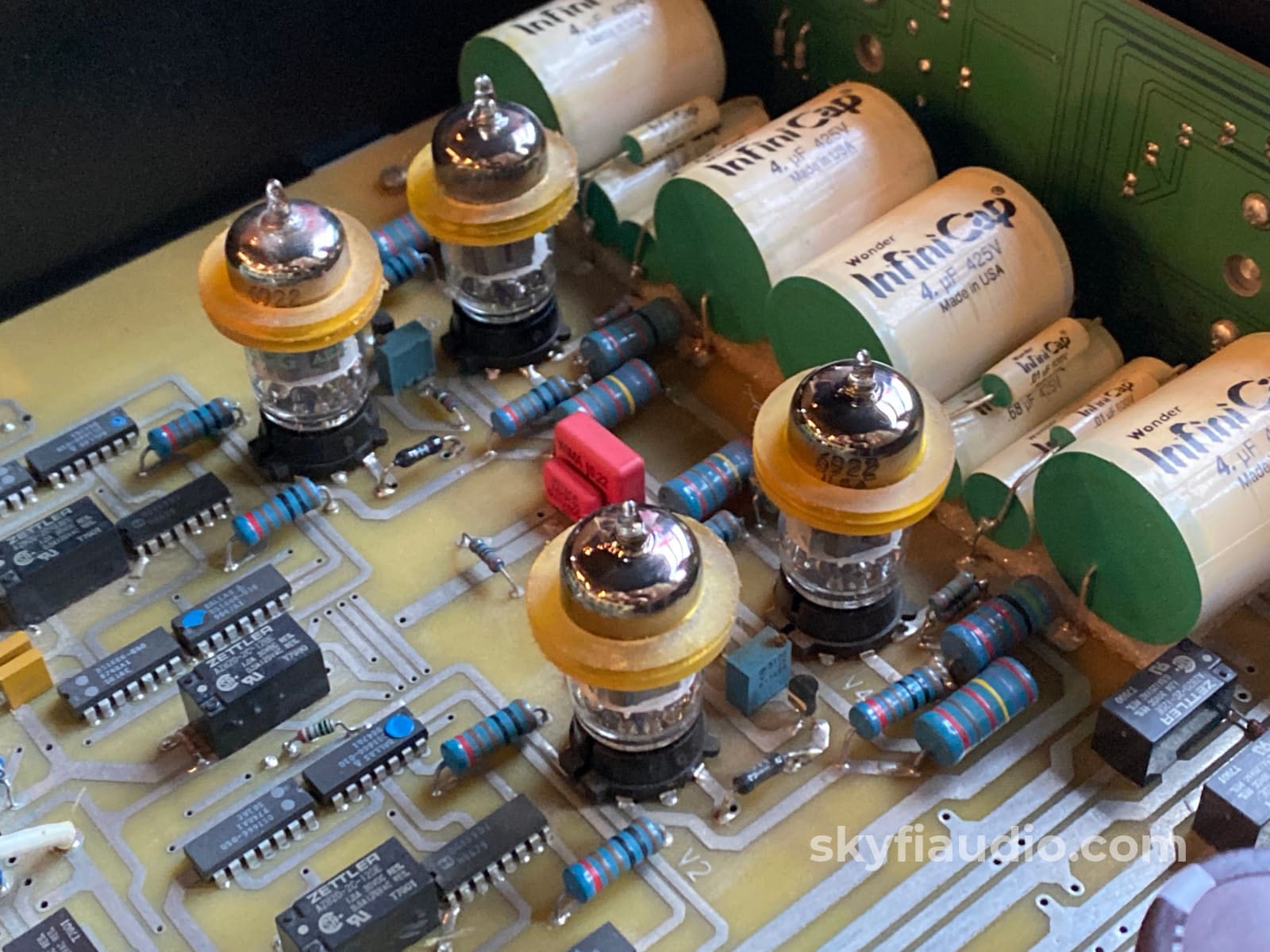
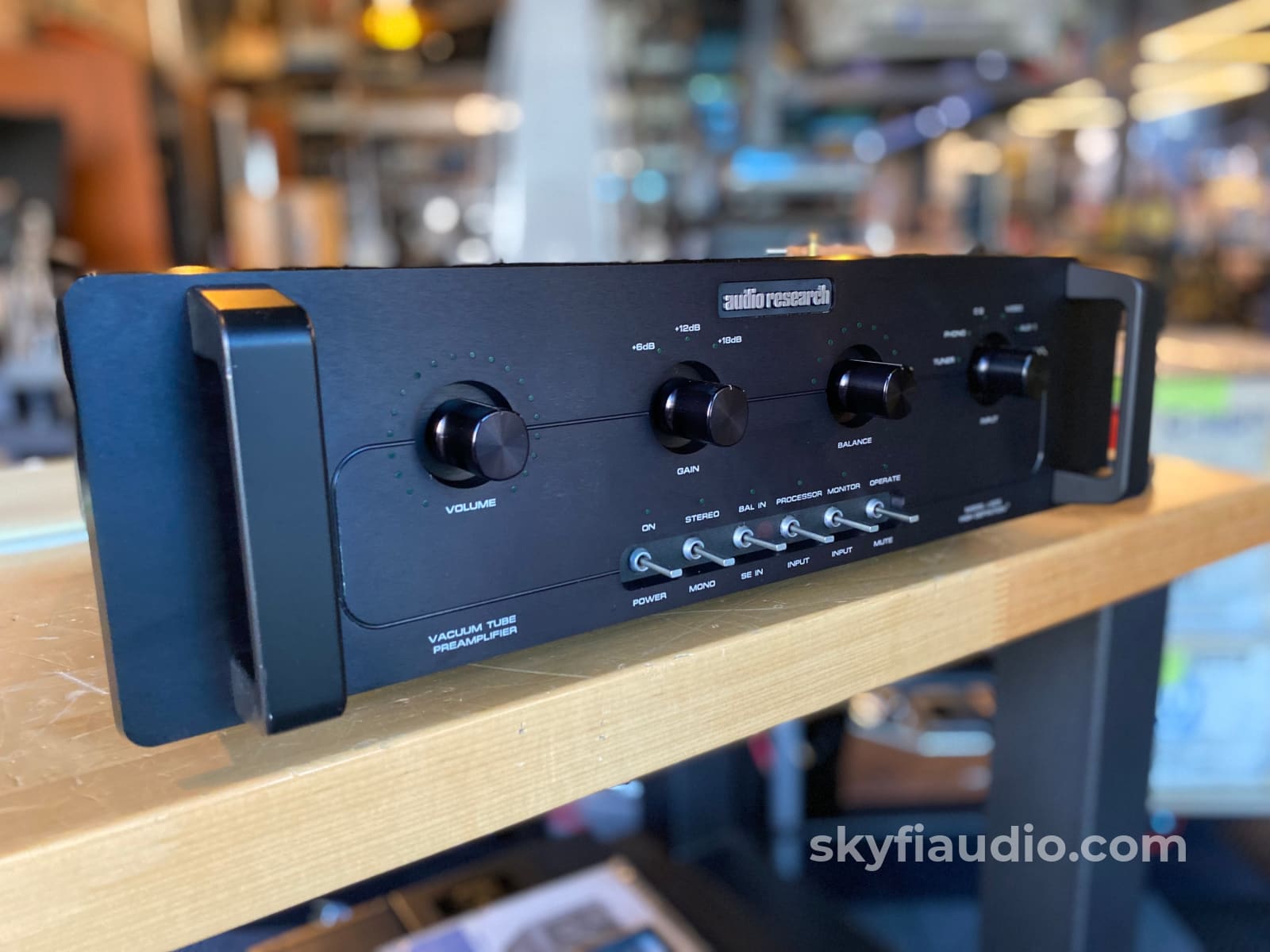
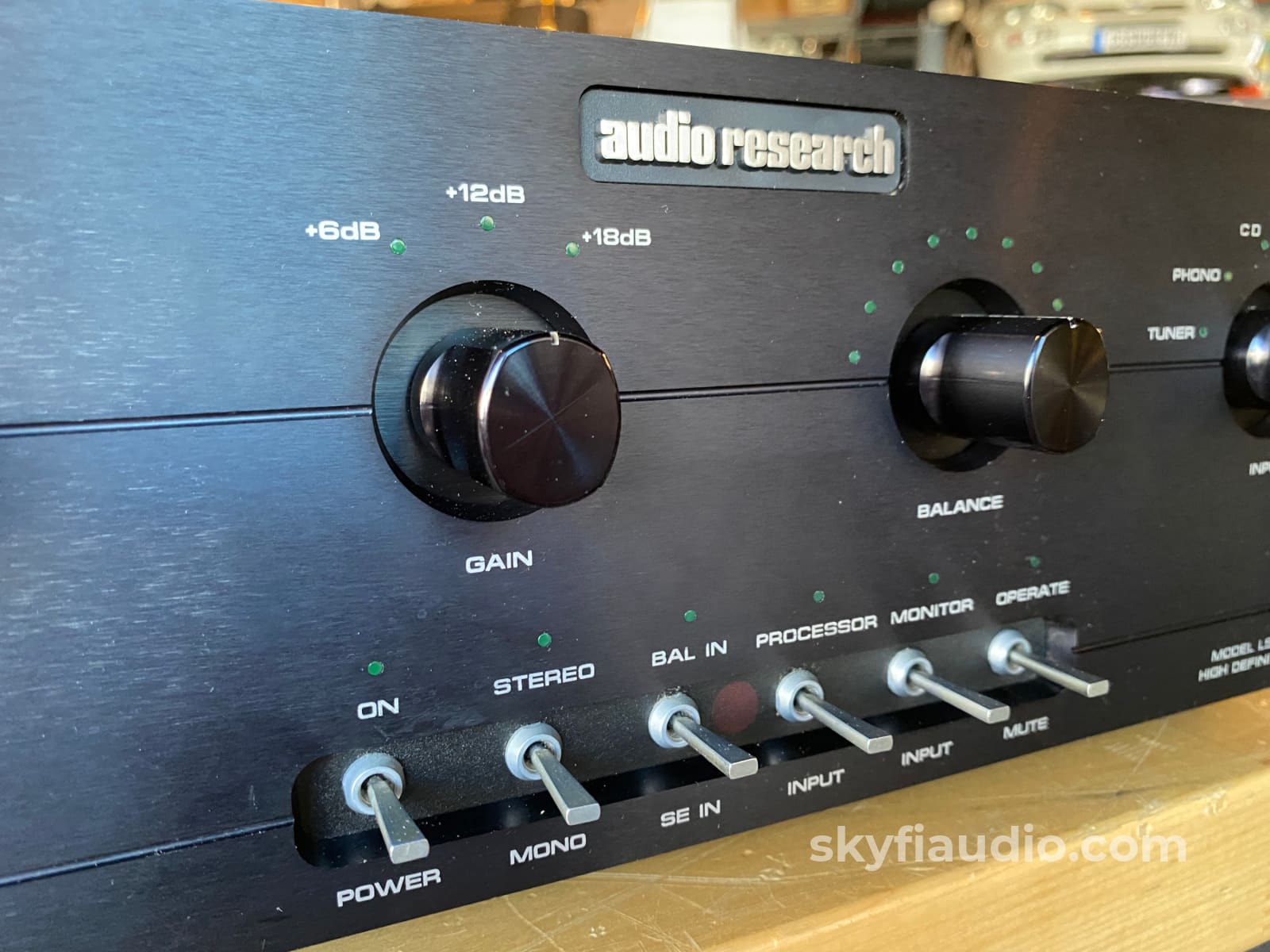
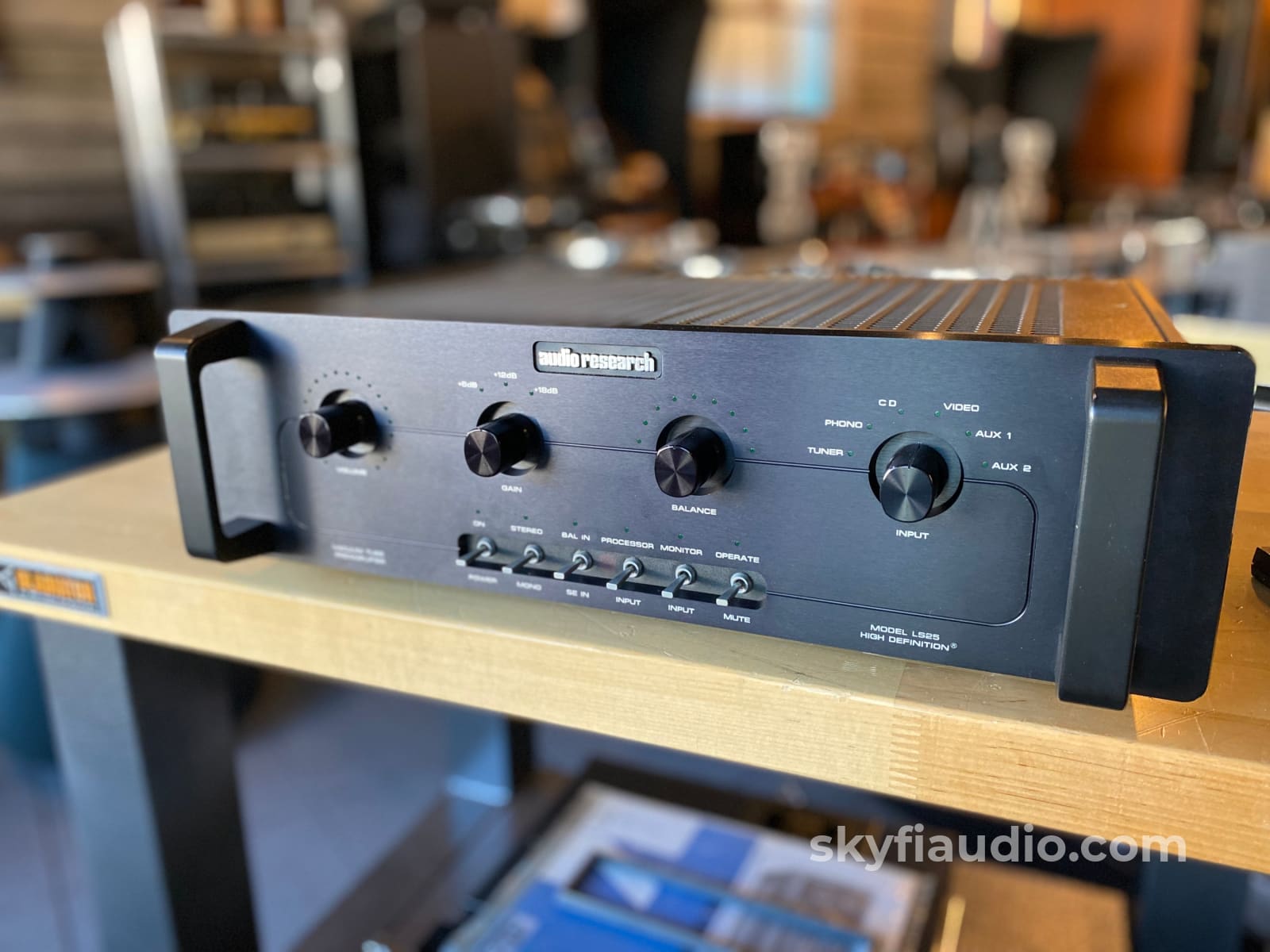
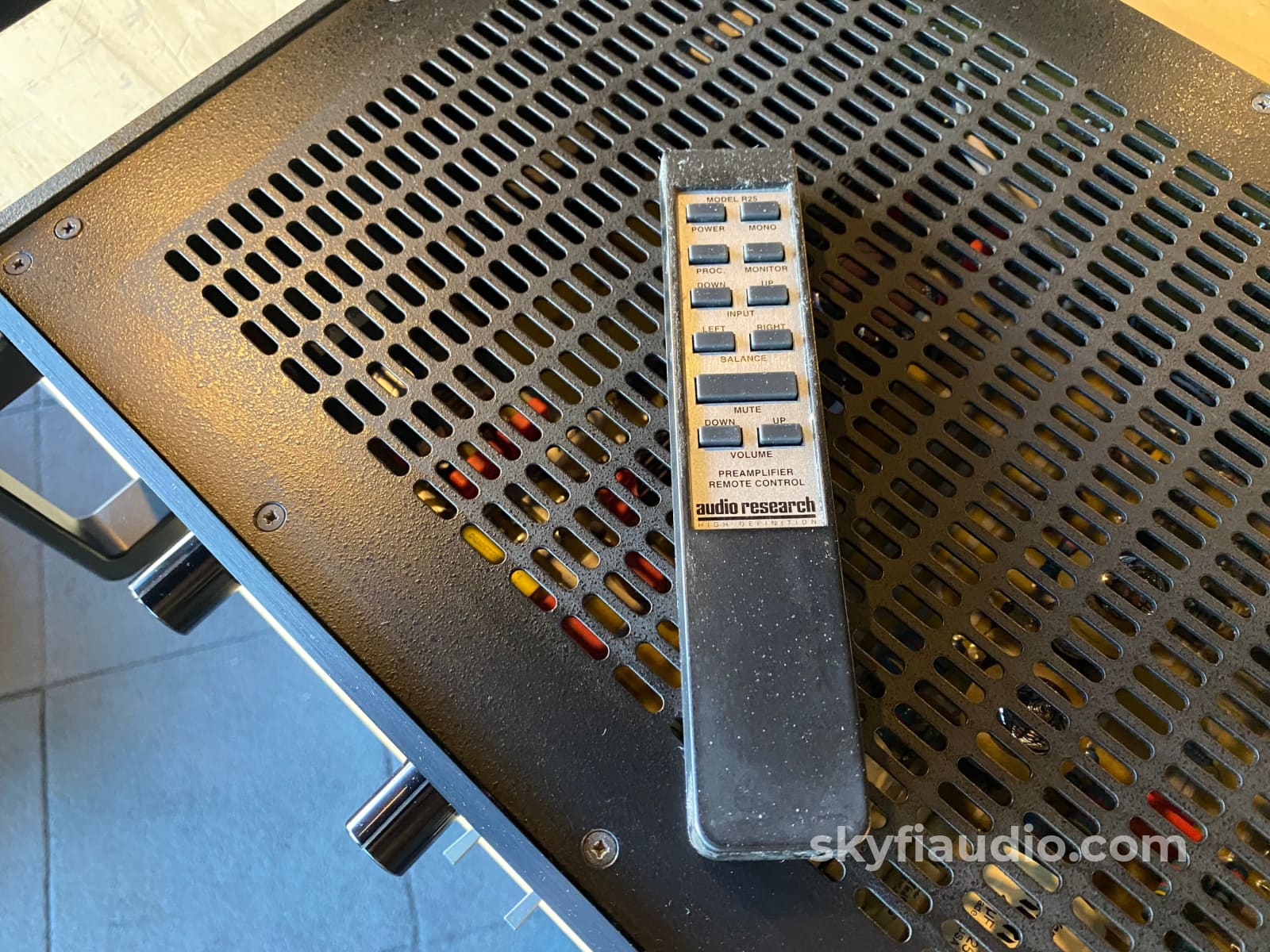
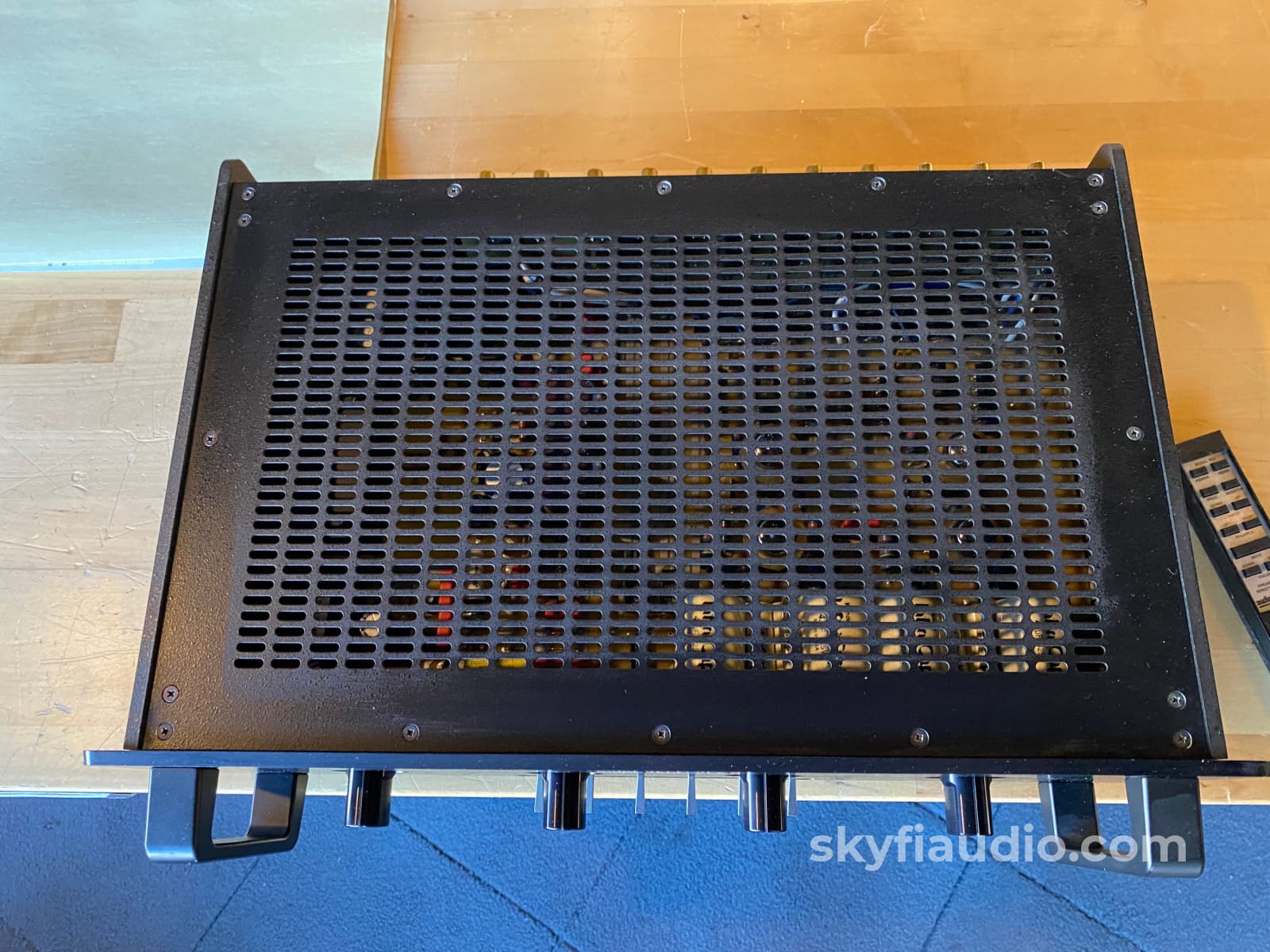
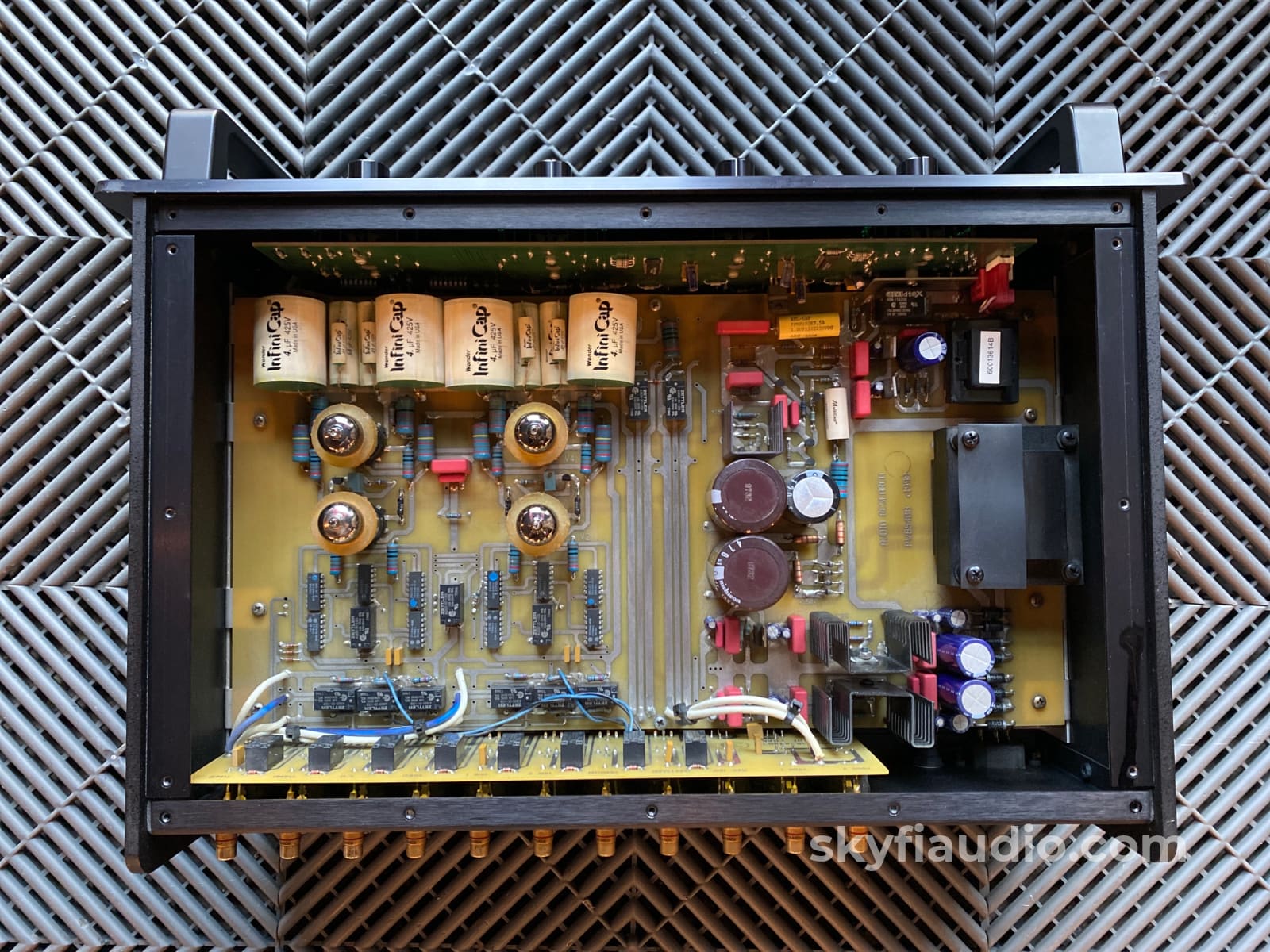
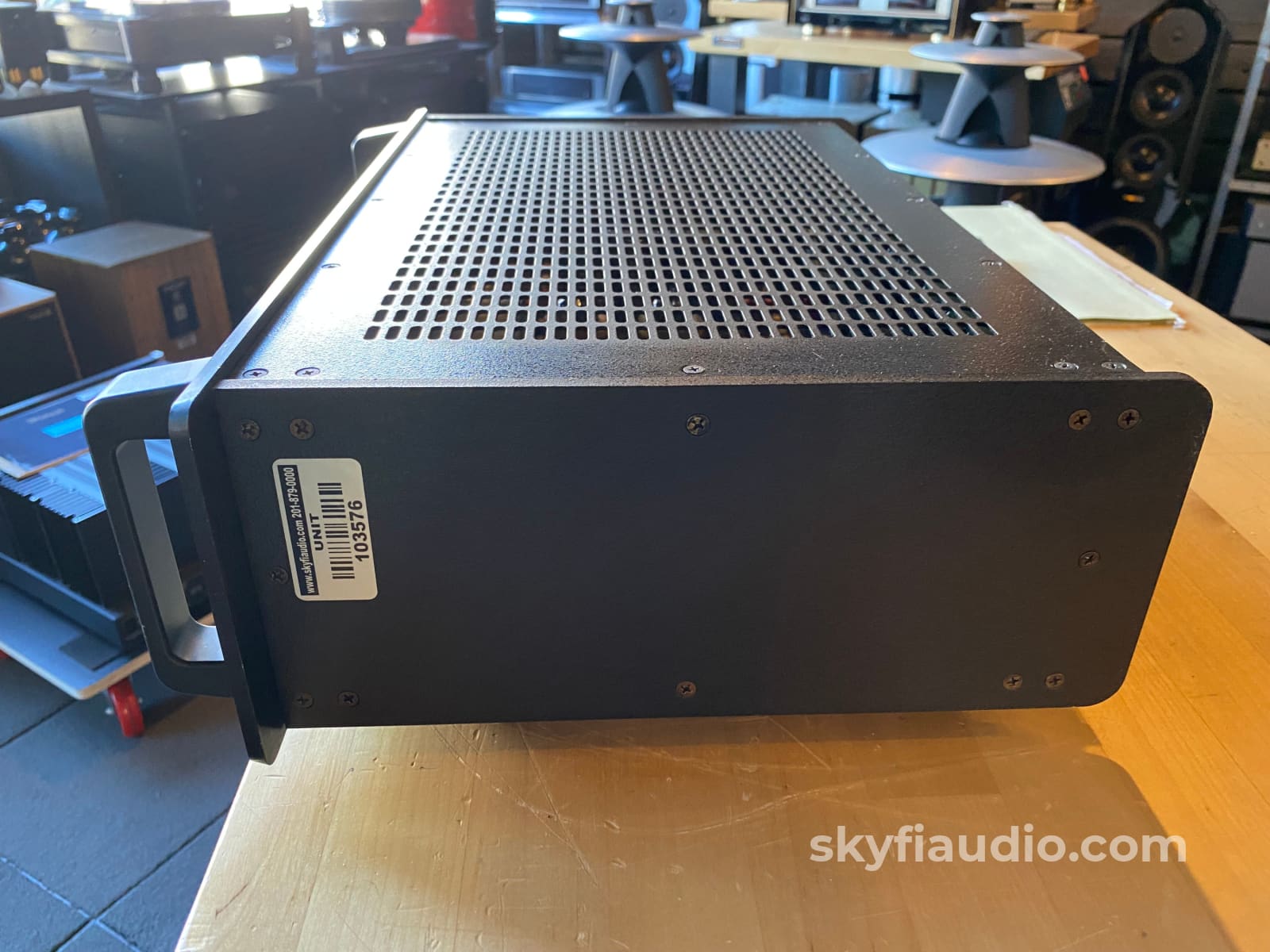
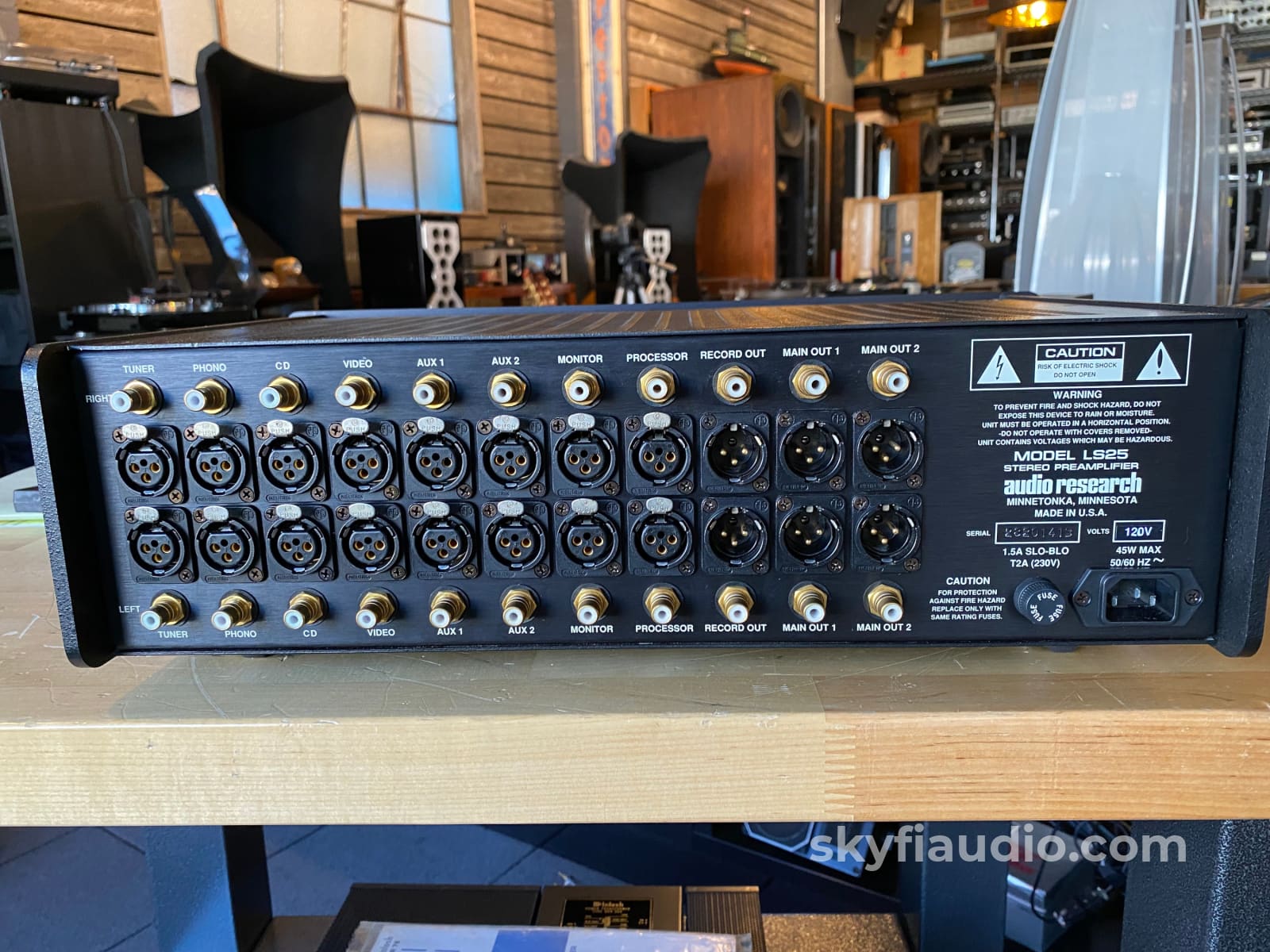
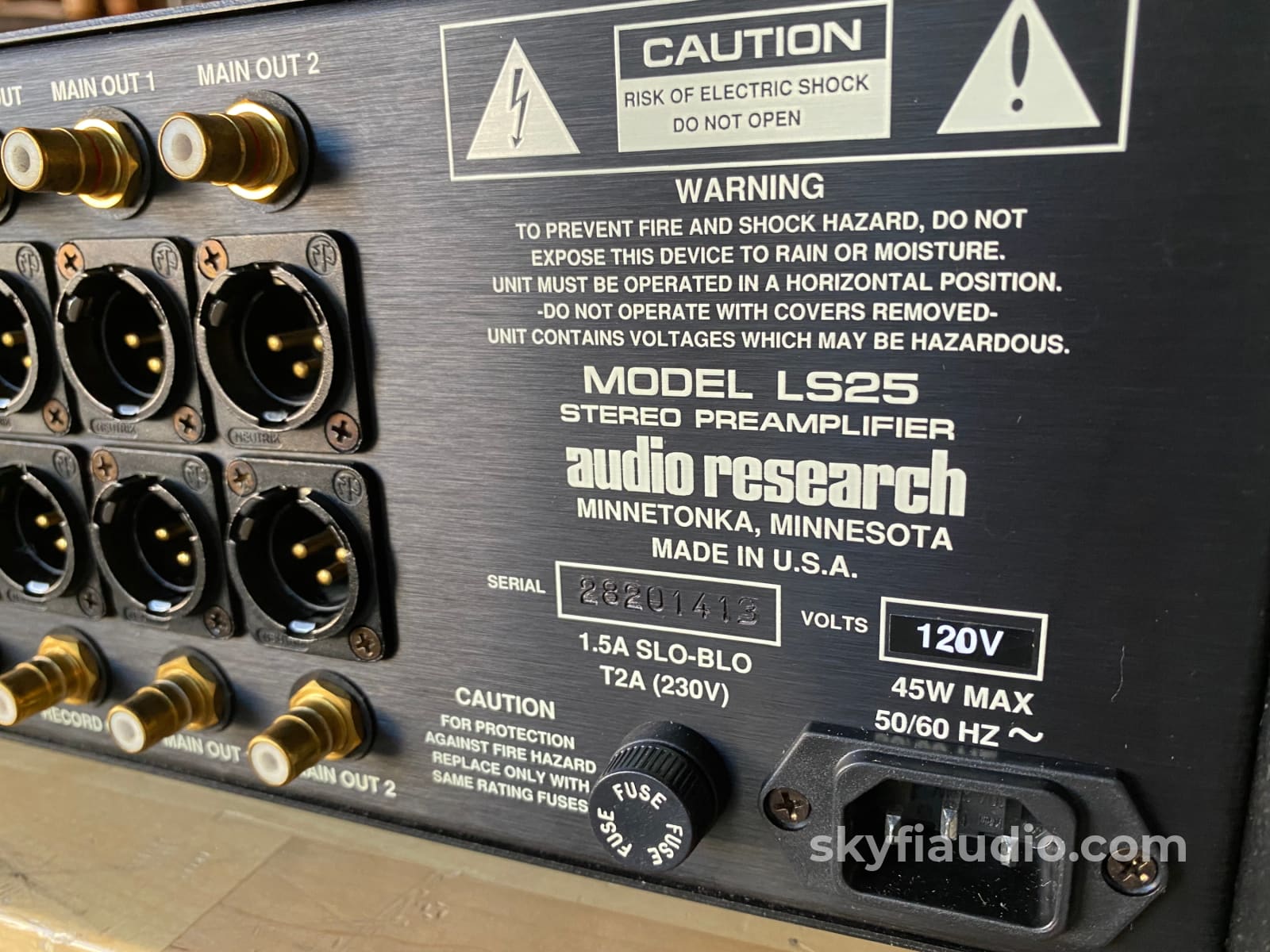
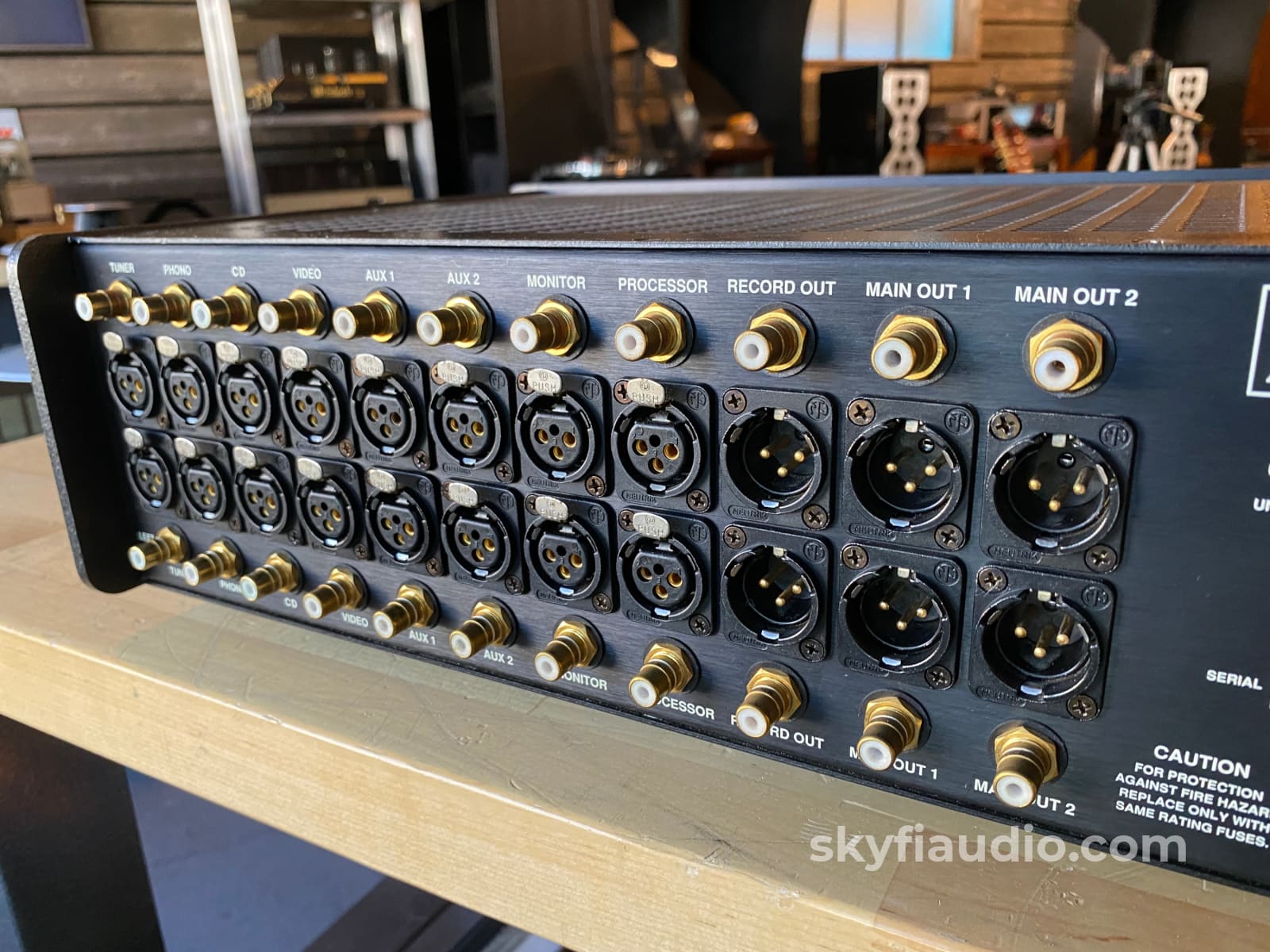
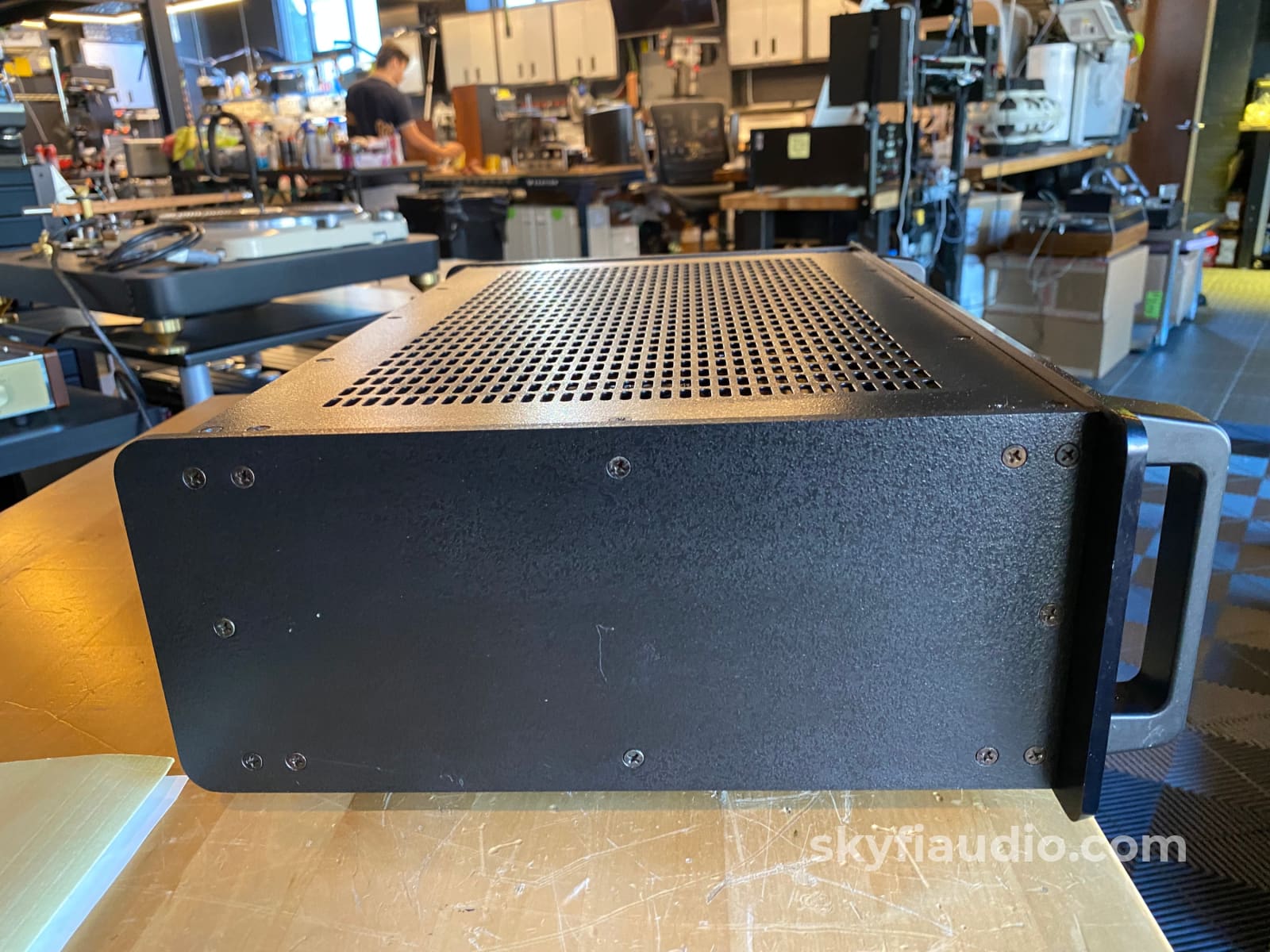
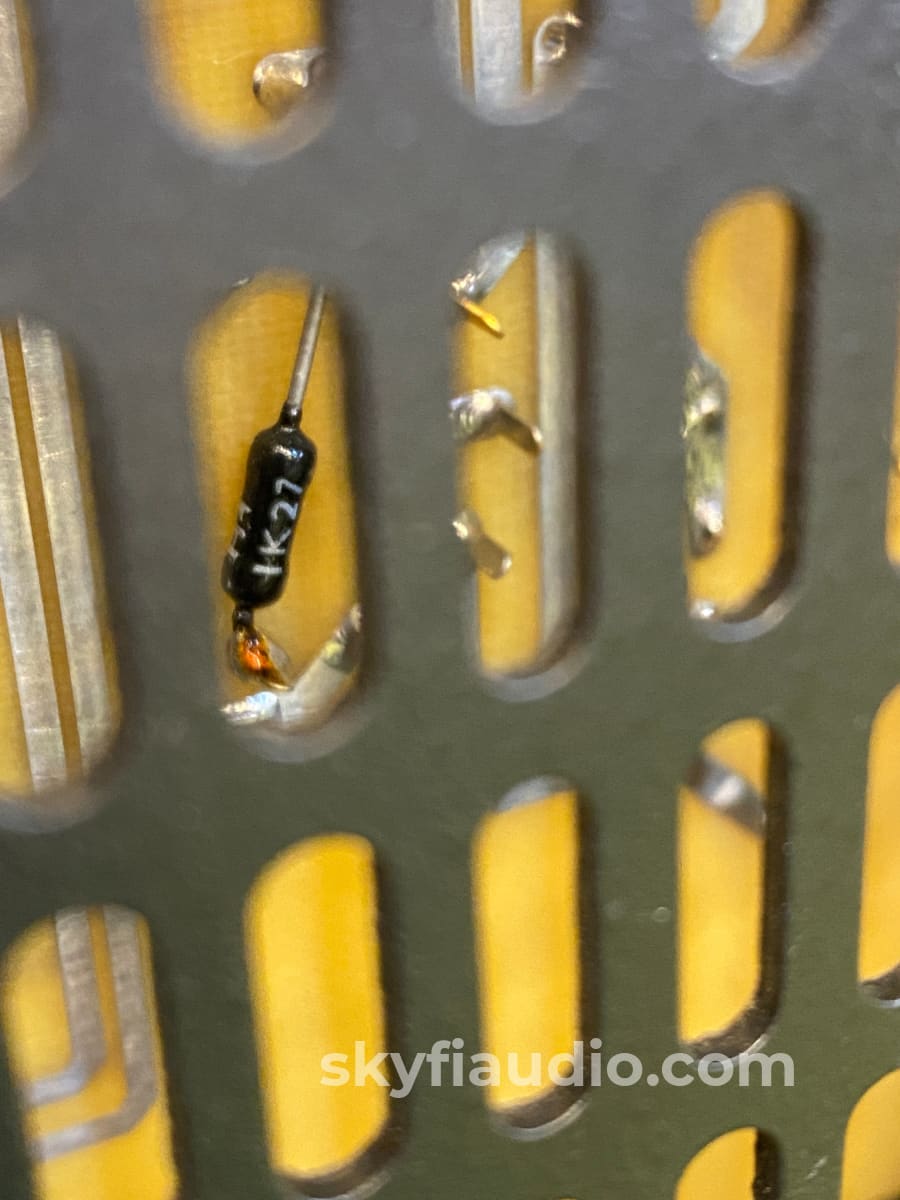
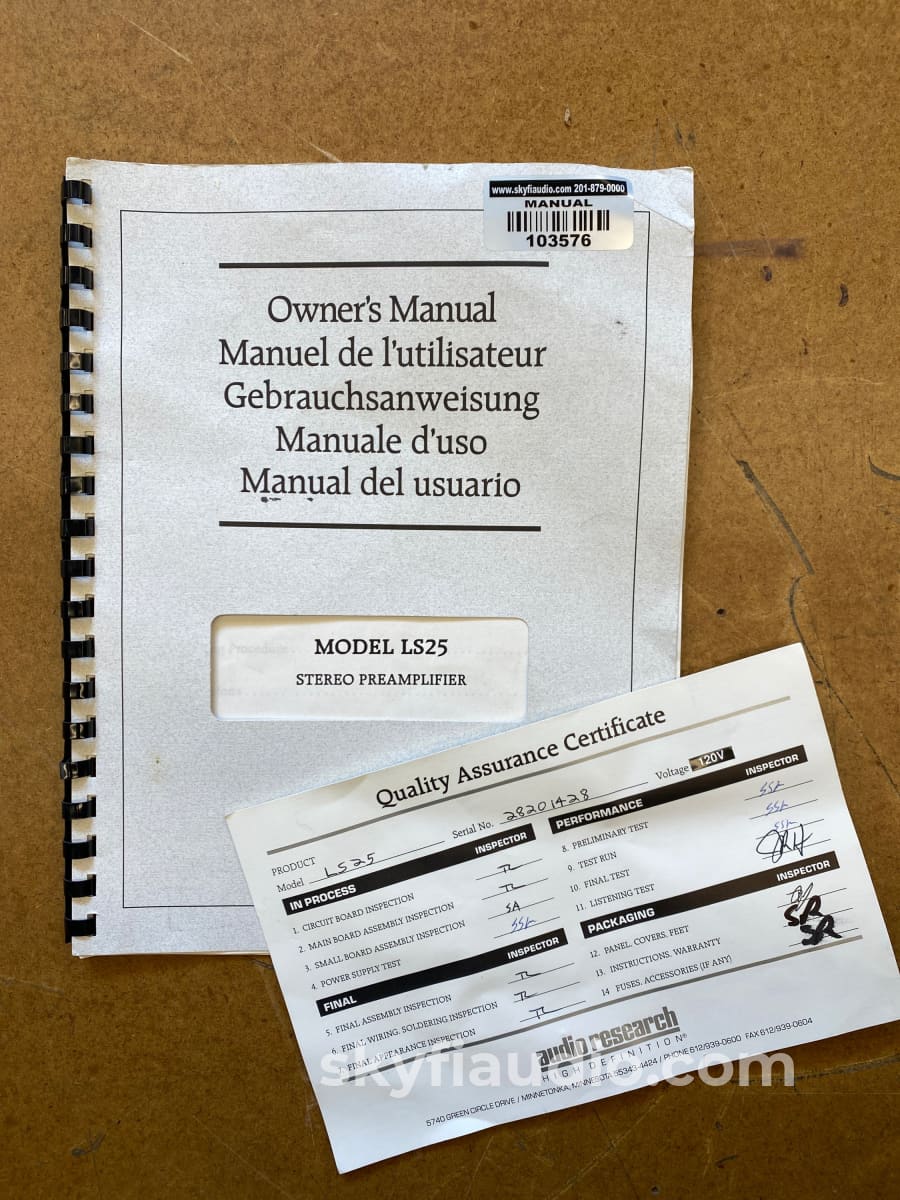
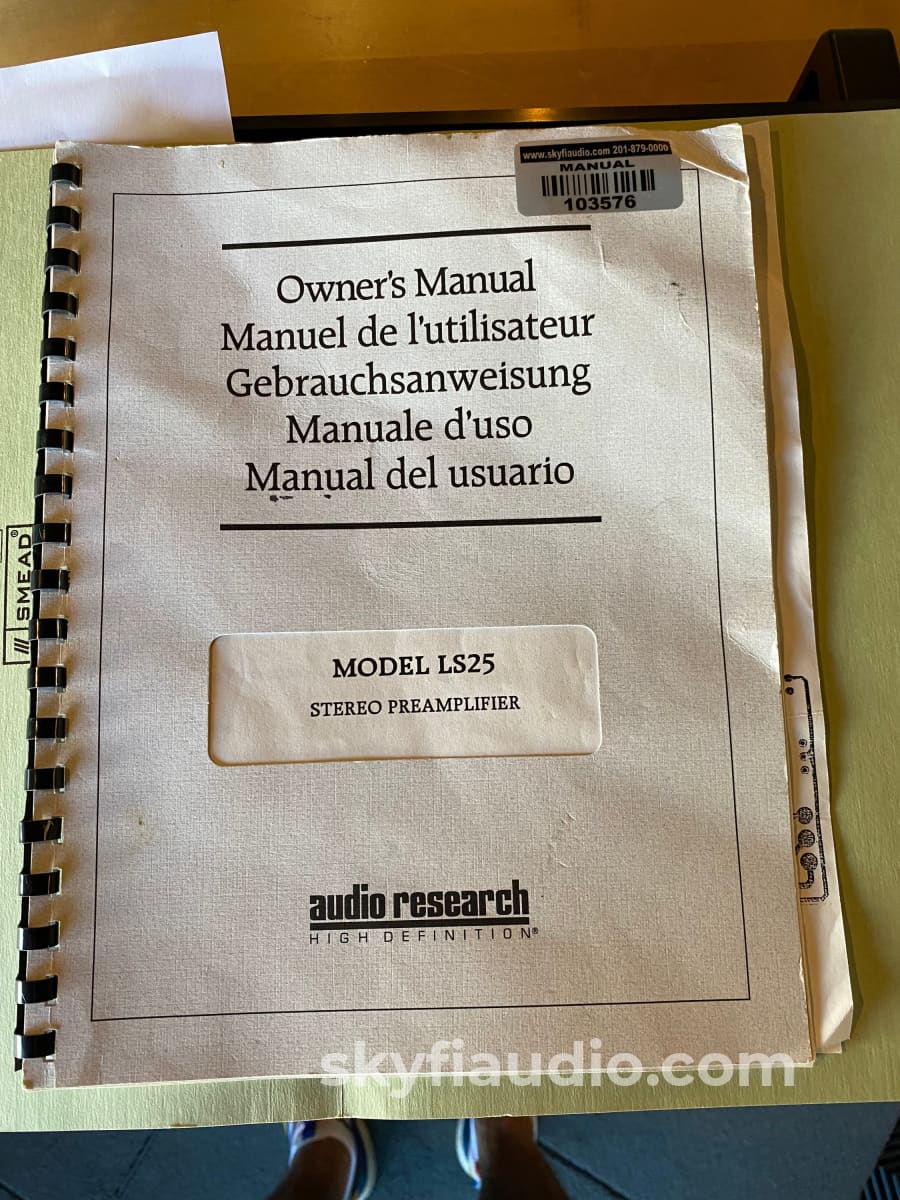
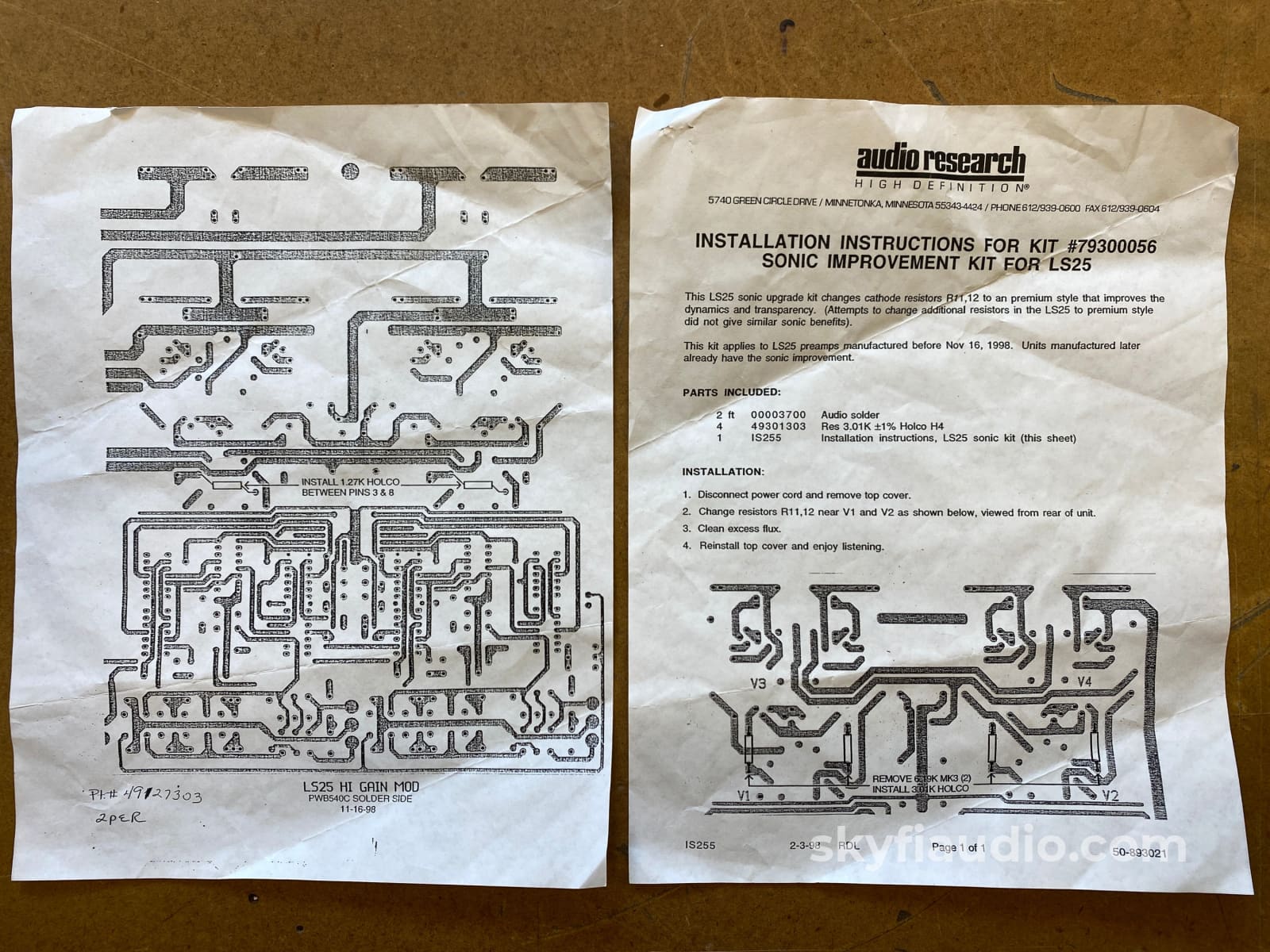
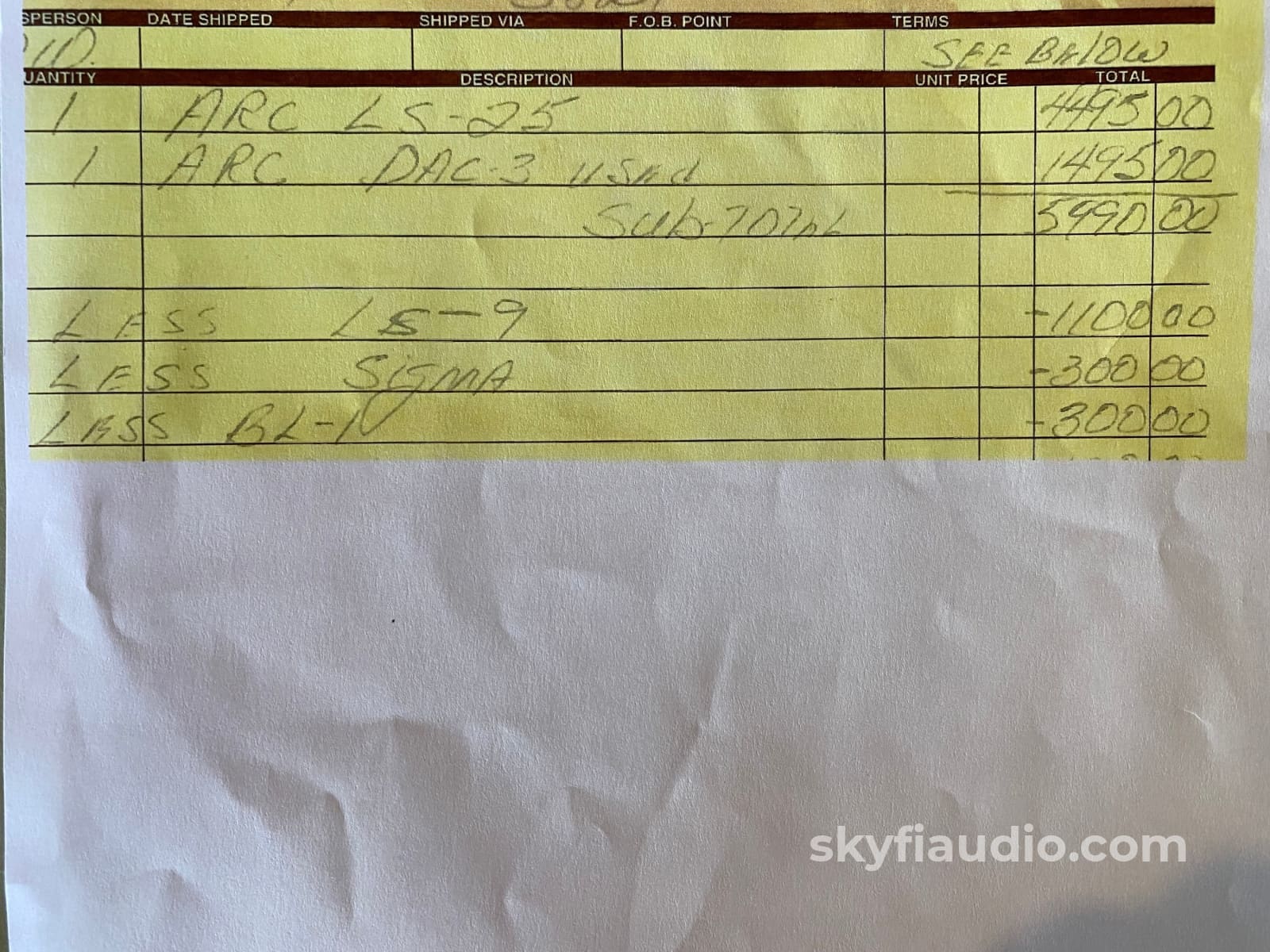
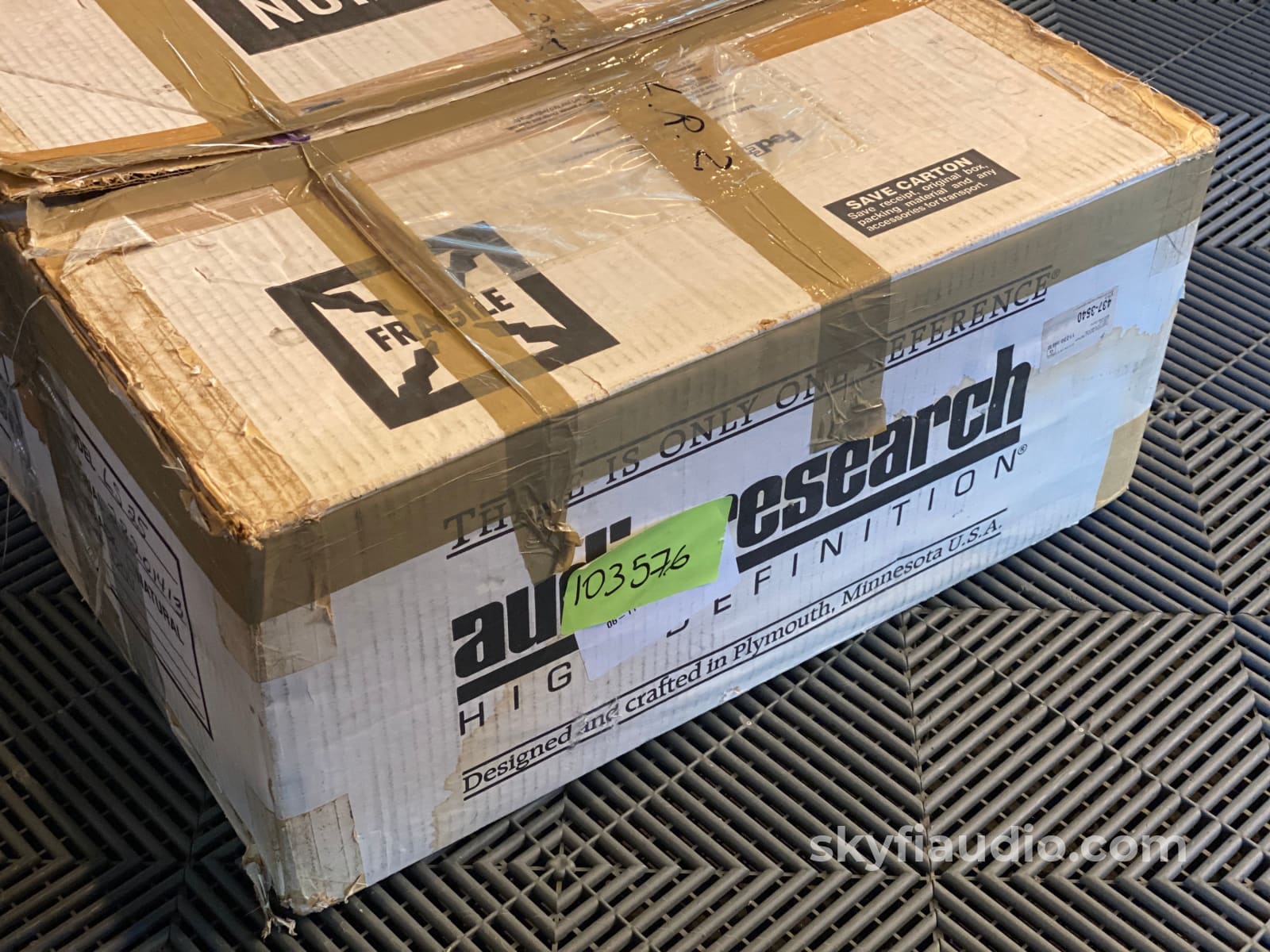
Audio Research LS25 MKI Tube Preamp w/ Factory High Gain & Sonic Improvement Mods Installed
Free Shipping on Most Electronics - Excludes Speakers and Items Requiring Freight - Contiguous U.S. Only
Pickup currently unavailable at SkyFi 479

Audio Research LS25 MKI Tube Preamp w/ Factory High Gain & Sonic Improvement Mods Installed
SkyFi 479
479 South Broad Street
Glen Rock NJ 07452
United States
Single owner LS25 MKI that's also a full kit including the original remote, box, manual, and even the original sales receipt!
This specific example also received a couple of factory approved modifications, involving the installation of Holco audio grade resistors in key circuit locations to increase overall gain and improve the sonic performance.
Kimber Kable - XLR Interconnects
Kimber Kable - Phono Interconnects - Better
Kimber Kable - Flagship Tonearm Interconnects - Best
Ascent Series Hero Analog Interconnects (PAIR) - RCA Ultraplate or WBT Connectors
Kimber Kable - Base Series PK14 Power Cord
The SkyFi Testing Process for Preamplifiers:
We start with a visual inspection of all internal components to make sure that there are no signs of heat stress or damage. Capacitors are checked for telltale signs of predictive failure including bulging, shrunken wrappers, or physical leakage. We also inspect the PCBs for discoloration from resistors or transistors that may have been running hot. On vintage units we often spot check select capacitors for value and ESR.
When we first power on a preamplifier we connect its RCA output to a Sencore PA81 Power Analyzer which simulates real world loading conditions and gives us an oscilloscope interface. The first order of business is checking that the volume control works smoothly throughout its entire range with acceptable channel balance. This is accomplished by feeding a 1KHz sine wave into one of the preamp’s line level inputs while monitoring the preamp’s output on an oscilloscope. We then switch to a 1KHz square wave to test the tone controls, loudness function, and filters where applicable. During this step we are watching for equal alteration of the test signal by both channels. This also helps us identify dirty controls that will need treatment. Once the basic line stage functions are verified, we test each input individually. This is especially important for devices that use relays to select their sources. If the preamp is equipped with a phono stage we test that as well. We use an inverse RIAA filter which allows us to feed a reference test signal into the phono input with the proper RIAA equalization and level. A square wave or sine sweep is used to verify that the device’s phono stage is faithfully reproducing the RIAA curve. If the preamp under test has balanced inputs and/or outputs these are tested as well.
We finish up our bench testing with a listening test with our bench amplifier and reference speakers. During this test we check for hum or hiss that may not have shown up in earlier testing. We also check that all of the tone controls and filters perform as expected. If the preamplifier has remote control functions these are also tested. Preamps with tube circuits or complicated power supply topologies are connected at our long term test rig for extended stress testing under real world conditions.
More from Audio Research:
The LS25 vacuum tube stereo line preamplifier offers sonic performance, functional flexibility and value second only to the world-renowned Reference One preamplifier. It is unprecedented measured by any performance criteria at its price.
Many will perceive the LS25 as a more compact REF1 -- and to be sure, there are many similarities in the mechanical design. Chassis construction is like the REF1, with finished slab sides and heavy top and bottom covers; chassis height and depth are slightly reduced, however. Front-panel control layout is also familiar: microprocessor-controlled rotary devices are used for overall gain set (High, Medium and Low), volume, balance and input selection. Two-way toggle switches control Power On / Off, Stereo / Mono, BAL / SE, Processor / Input, Monitor / Input and Mute. The selectable overall gain function allows a wider range of volume-control operation for input sources having different output levels (for example: a phono stage vs. a high-output D/A converter). The A-V processor to control overall system volume level instead of the LS25's volume control when used in this mode. Thus, the LS25 fits smoothly into any high-performance installation which combines audio and video playback functions.
The rear panel offers a full complement of audiophile-grade balanced and single-ended connectors: seven inputs (including tape monitor), a tape / record out and two sets of main outputs. Balanced or single-ended optimization for every input is selected via the front-panel toggle, and is automatically remembered (along with previously selected gain level) by the LS25’s internal memory. All functions (except gain and SE / BAL) are addressable via the supplied handheld IR remote control. A.C. power is supplied at the rear panel via a three-pin IEC socket and 14-gauge detachable power cord.
Inside, the LS25 is pure Class-A operation Audio Research: gain is supplied via four 6922 twin triodes, with fully regulated massive power supplies and Infinicap coupling caps at the output for maximum dynamics and transparency. Performance is smooth and detailed, with good soundstage focus and plenty of deep bass impact. The overall presentation is refined, yet with power that extends effortlessly into the frequency extremes. Like the REF1, the LS25 never meets a sonic challenge it can’t handle with aplomb -- and it does so while offering all the features needed to fit into today’s multipurpose entertainment systems.
Details and Specifications
Tube stereo line stage
INTRODUCED
1998
FREQUENCY RESPONSE
±.5dB, 1.0Hz to 100kHz -3dB points below 0.2Hz and 400kHz
DISTORTION (THD)
Less than .01% at 2V RMS output
NOISE & HUM
14µV RMS residual IHF weighted balanced noise output with gain control at minimum (103dB below 2V RMS output).
GAIN
Main Output: Selectable for each input: 18db, 12dB, 6dB Balanced output. (12dB, 6dB, 0dB SE output). Record output: 0dB.
INPUT IMPEDANCE
120K ohms Balanced, 60K ohms SE.
OUTPUT IMPEDANCE
650 ohms Balanced, 325 ohms SE Main (2), 20K ohms minimum load and 2000pF maximum capacitance.
MAXIMUM INPUTS
28V maximum, BAL, 14V maximum SE (6dB gain)
RATED OUTPUTS
2V RMS 1Hz to 100kHz into 200K ohm balanced load (maximum balanced output capability is 40V RMS at less than 0.5% THD at 1kHz).
POWER SUPPLIES
Electronically-regulated low and high voltage supplies. Automatic 40 sec. warm-up/brown-out mute. Line regulation better than .01%.
TUBE COMPLEMENT
4 x 6922/E88CC
POWER REQUIREMENTS
100-135VAC 60Hz (200-270VAC 50/60Hz)
45 watts maximum
OTHER
Vacuum tube audio circuit, solid-state power supply. Inputs (8): Tuner, Phono, CD, Video, Aux 1, Aux 2, Monitor, Processor (XLR and RCA connectors). Outputs (3: 2 Main, 1 Record (XLR and RCA connectors). Controls: Volume (104 steps), Gain, Balance, Input. Toggle switches: Power On/Off, Stereo/Mono, Bal In/SE In, Processor/Input, Monitor/Input, Mute/Operate.
DIMENSIONS
19" (48 cm) W x 5 ¼" (13.4 cm) H (standard rack panel) x 11 ¾" (29.8 cm) D Handles extend 1½" (3.8 cm) forward of front panel.
WEIGHT
18 lbs. (8.2 kg) Net; 28 lbs. (12.7 kg) Shipping.
|
Item |
Included |
|
Original Box |
Yes Included |
|
Manual |
Yes Included |
|
Remote |
Yes Included |
|
Cables |
Yes - Power Only |
|
Physical Condition |
7 / 10 |
|
Working Condition |
10 / 10 |
Choose options
